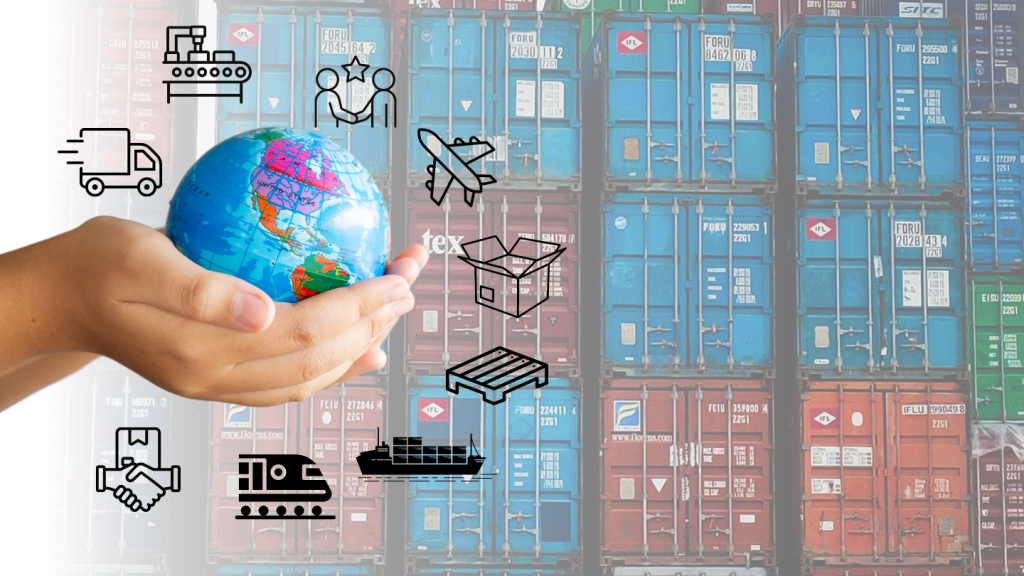
Resilient humans are the foundation for organizations to be resilient.
In this article, part of a 4-article series, we discuss the second pillar of action to building a resilient supply chain: the people of the organization. Make sure to read the entire series, subscribe to our newsletter.
Resilience is being able to bounce back from a disruption. The first response’s effectiveness and rapidity will be the key drivers for launching a speedy and strong recovery. If we expect our organizations to be resilient, the first step is making sure that our team members are resilient.
In the last article, we mentioned the importance of setting and sharing the mission and values of the organization. This provides a critical element to resilient people: it provides a direction, a purpose, a common goal. Adrenaline and firefighting are great temporary motivators, but when people don’t know what they are fighting for, they get out of breath quicker than those that believe in the cause. When people work towards a common goal, they strive together towards something. It helps them believe that whatever they are fighting for is achievable, even if it is strenuous. This belief is the initial fundamental element required for people to build their resilience.
Resilient Humans Adapt
It takes time to develop resilient approaches, but above all it takes a capacity for adapting to different scenarios. To enforce it, developing skills and competencies, cross training with and learning from our peers are crucial. So is finding oneself in an environment that is positive, where people respect each other, encourage each other and learn from each other. Inclusivity and diversity are to be leveraged so that different perspectives and expertise are brought to the discussion table, building mutual respect and trust amongst team members. This team approach to learning from one another, will also be instrumental in people recognizing the expertise of their peers. And in times of crisis, knowing who to turn to for specific information is part of being able to adapt to the situation and react appropriately. In turn, this approach will create an organization in perpetual learning where knowledge management becomes the major tenet for people development and organizational success.
Facing Adversity
During difficult times, adversity can create several different reactions from people. For some, it will put them in a state of physical and mental distress. For others, they will thrive and see this situation as a new challenge. Leaders therefore have the responsibility to understand the reality that their team is going through (in and outside of work) and set limits and expectations so team members know they can have balance during difficult times. Showing compassion to their team members and to themselves is critical in recognizing the need for mental and physical health, which are mandatory components for developing resilient mindset. Furthermore, they need to be present and listen to their team’s concerns, show that they trust and support the team. During moments of crisis, leaders need to share all the information available so that the team can assess and make the best decision possible. The leadership team plays an important role in communicating what other projects are in progress, who are the people responsible for them, sharing which are the strategic projects of capital importance and what are the nice-to-haves so that team members focus on the right priorities.
Being able to launch quickly into risk identification and management requires discipline and a pre-established routine of reaction. By having a team ready not only to react but to watch out for the possible disturbances, we improve our opportunities of catching the disturbance quickly enough to be able to put in motion mitigations plans. If that team is already identified, then they can start collaborating together.
Resilience requires practice and effort.
Waiting for the crisis to occur to ask the team to show resilience will not work. This needs to be practiced and learned. It is therefore efficient to promote this approach during normal state of affairs so that teams can develop their skills when the waters are calm. Encourage them to work with the entire organization, not just their specific department. Let them get to know each other, learn from each other, push each other, and experiment with different approaches. It will help them find their teamwork model, build trust, learn to work together, to challenge and to listen to each other, and to gain a holistic view of the firm. It will also help them establish a routine which will be helpful when the crisis does happen. A routine takes time to learn and to adopt. When things go awry, we want the team to fall back on the right routine that will help them face the upcoming challenges. Having time prior to the disturbance is therefore critical to creating these routines, learning, and adopting them so that when they are needed, they are ready.
Resilient Humans Need to Learn from What Happened
After the crisis, take time to debrief, see what was learned, what worked, what didn’t work. Resilient humans learn from their past experiences and reviewing the processes, what were the changes made to face the crisis and ask questions are all part of that exercice:
- What was learned from them?
- How different are they from the regular process?
- How did they alter the output, the result?
- What changes in the process helped improve the situation?
- Can we change the normal process to incorporate some of the new learnings? What will be the impact?
Review how the team worked together:
- What were the challenges within the team?
- What impacted the team’s ability to perform?
- What do we need to change for the next time?
- What has brought us success and we need to make sure we maintain for the next time?
Lastly, as part of the debrief, recognize and show appreciation for those who worked hard to find solutions and implement them. Celebrate the wins! But also celebrate the knowledge and skills gained, even in those moments when it doesn’t feel like you won.
“Resilience is not a condition of any single factory. It is a systems condition. It is a community condition. It is a condition of interdependence, not independence.” (Unruh, 2016 (2))
Next week, we will continue the series discussing how technology and processes strengthen resiliency within the supply chain. To receive all the articles, please register for our newsletter.
CONTACT US TO FIND OUT MORE!
Sources:
(2020) Supply Chain Transparency Creates Resilient Operations. Ryder
Aylor, B. et al. (2020) Designing Resilience into Global Supply Chains. BCG.
Fiksel, J. et al. (2015) From Risk to Resilience: Learning to Deal with Disruption. MIT Sloan Management Review. Winter 2015, vol. 56, no.2.
Gandhi, S. and S. Mehltretter (2020) Toward a more resilient supply chain. CSCMP’s Supply Chain Quarterly.
Gartner for Supply Chain (2020) Weathering the Storm: Supply Chain Resilience in an Age of Disruption. May 2020.
Heath, B. and A. Christidis (2020) Invest in People to Best Manage Through Disruption.MIT Sloan Management Review.
(Kaplan. R. et al. (2020) The Risks You Can’t Foresee. HBR November-December 2020
Kirkman, B. et al. (2019) The 4 Things Resilient Teams Do. HBR.org
Linton, T. and B. Vakil (2020) Coronavirus is Proving We Need More Resilient Supply Chains. HBR.org
Lund, S. et al. (2020) Risk, resilience, and rebalancing in global value chains. McKinsey Global Institute
Raman, K. and D. Ryntjes (2020) The Route to a More Resilient Supply Chain. Gartner Business Quarterly
Schrage, M. (2020) Data, Not Digitalization, Transforms The Post-Pandemic Supply Chain.MIT Sloan Management Review
Shaikh, S. and J. Baker (2020) Building Supply Chain Resilience Through a Boundaryless S&OP and S&OE Process.BlueYonder
Sheffi, Y. and James B. Rice Jr. (2005) A Supply Chain View of the Resilient Enterprise. MIT Sloan Management Review, Fall 2005, vol. 47, no.1.
Unruh, G. (2016) Strategies for Business Resilience. MIT Sloan Management Review
Unruh, G. (2016) The Surprising Secret of Business Resilience. MIT Sloan Management Review
Urciuoli, L. Automating Supply Chain Resilience Should Be High on Your Digital Agenda,MIT Sloan Management Review, Jan 2017.
Photo Credit: Joseph Mucira de Pixabay







